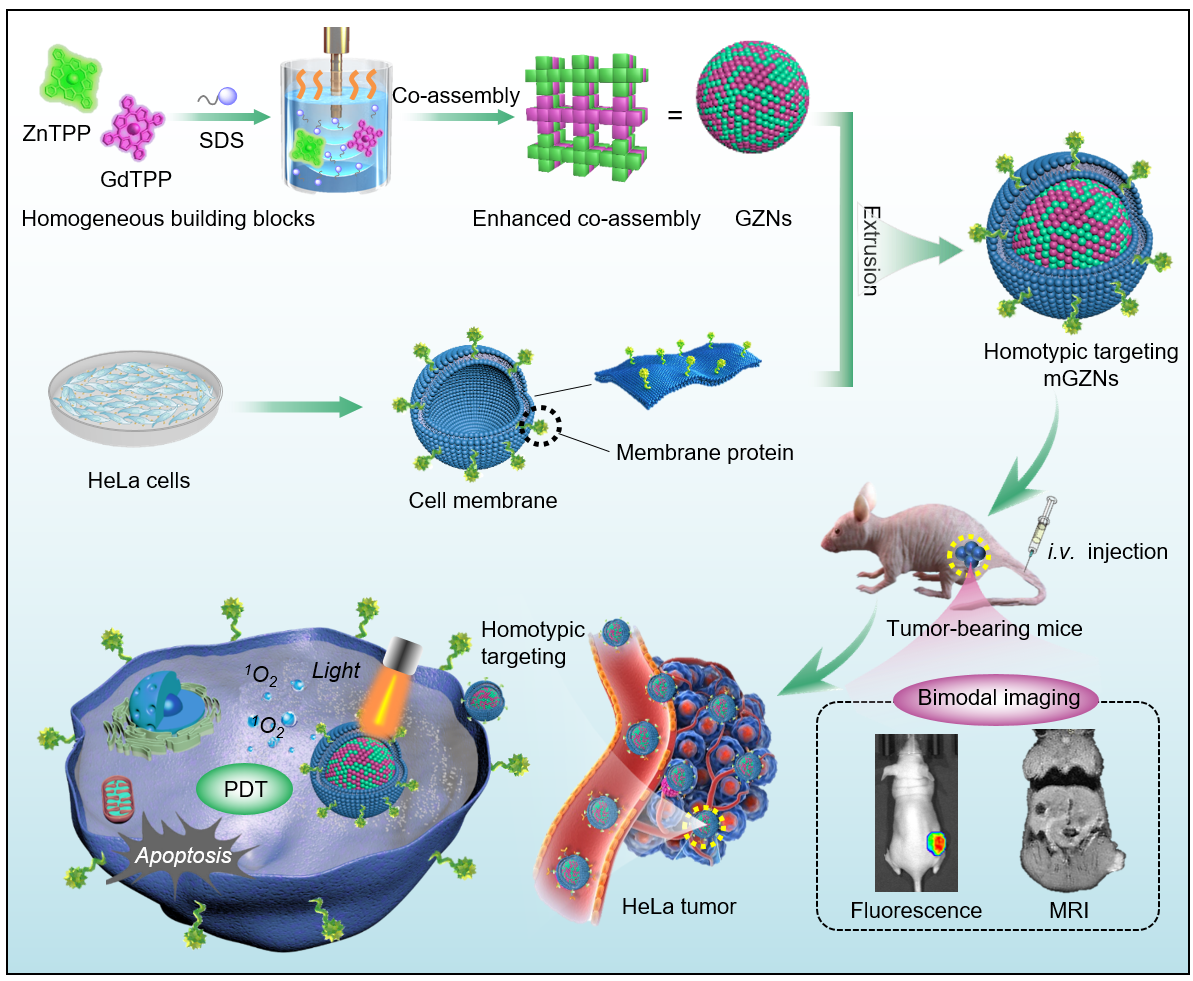Abstract
Dual-modal imaging guided photodynamic therapy (PDT) of multifunctional nanocomposites holds great promise for precision tumor theranostics. However, poor heterogeneous interfacial compatibility between functional components, low hydrophilicity and complicated preparation of nanocomposites remain major obstaclesfor further bioapplication. Herein, a facile central metal-derived co-assembly strategy is developed to effffectively integrate gadolinium porphyrin (GdTPP) contrast agent and Zinc porphyrin (ZnTPP) photosensitizer into a homogeneous GdTPP/ZnTPP nanocomposites (GZNs). GZNs possesses the following advantages: (1) Greatly improved interfacial compatibility facilitated by incorporating two metalporphyrins with same group (phenyl-) and difffferent central metal atoms (Zn and Gd) leading to higher yield (4.7–5 fold) than either monocomponent nanoparticles. (2) Poor dispersity of GdTPP nanoparticles is greatly improved after integrating with ZnTPPblocks. (3) The GZNs inherit excellent flfluorescence imaging, high relaxation rate (8.18 mM−1 s−1 ) and singlet oxygen production from two raw metalporphyrins. After camouflflaging with homotypic cancer cell membrane for immunologic escape, the HeLa membrane coated GZNs (mGZNs) show enhanced in vivo MR/FL imaging guided anti-tumor targeting effiffifficiency of 80.6% for HeLa cells. Our new strategy using central metal-derived co-assembly of homogeneous building blocks greatly improves interfacial compatibility to achieve combined functions for visualized cancer theranostics.

https://doi.org/10.1016/j.biomaterials.2019.119576
